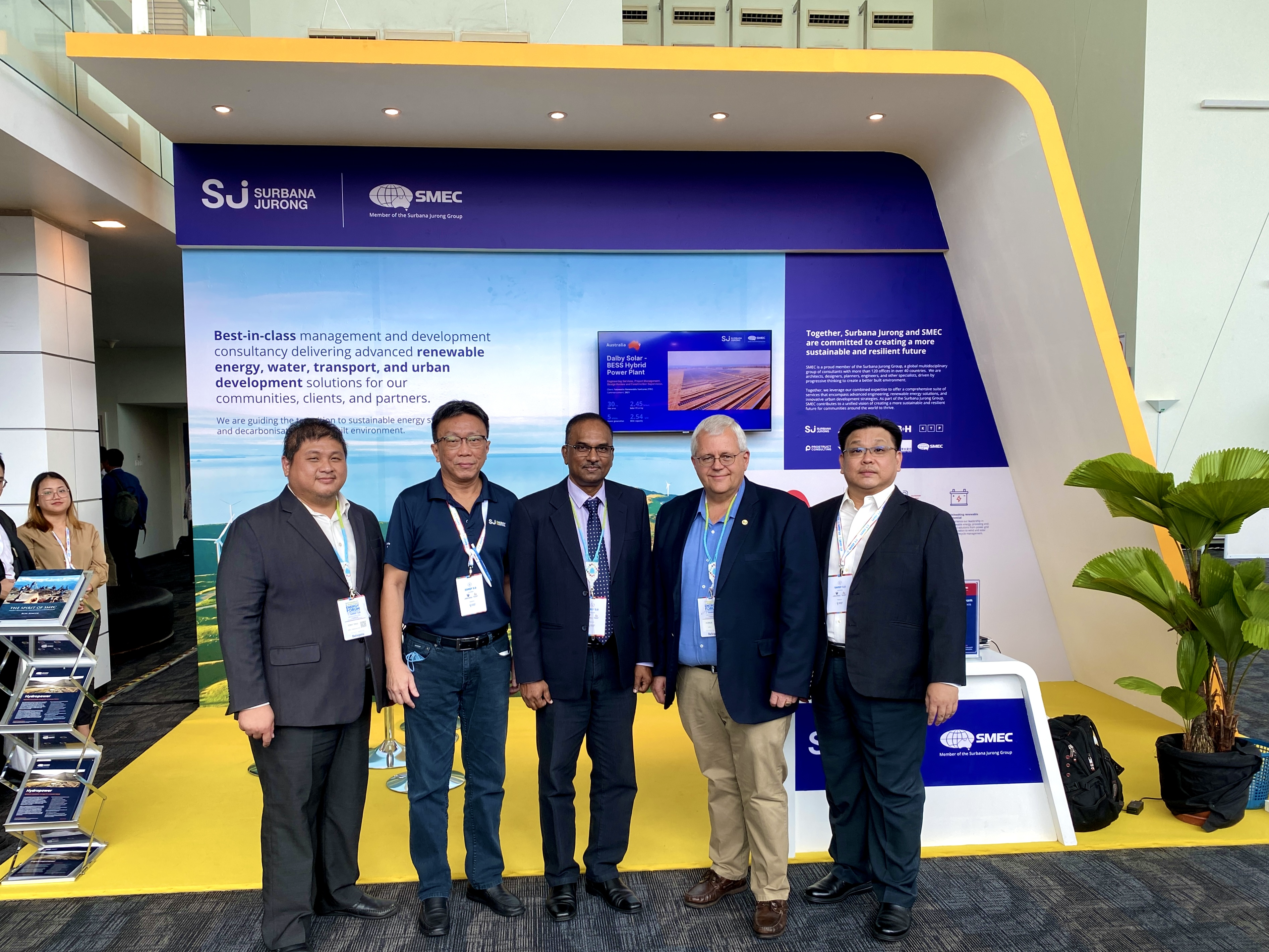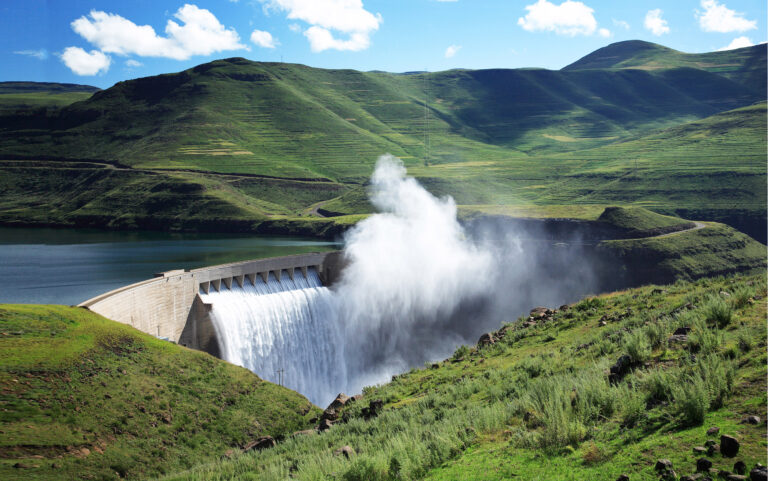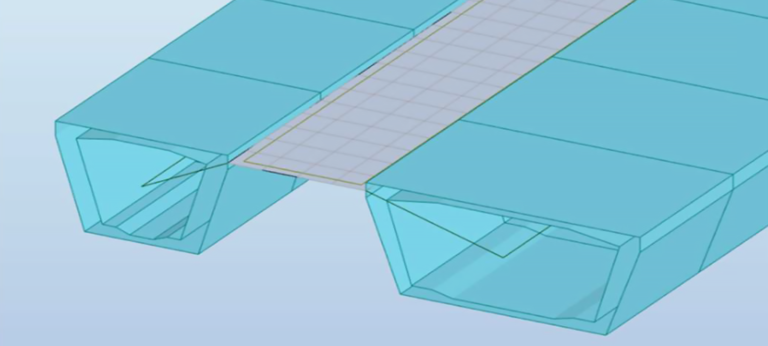SAREF
2023:
Reflections
and
insights

Desde los primeros pioneros en el Esquema Hidroeléctrico Snowy Mountains hasta nuestros líderes e innovadores de hoy, nuestra gente nos hace quienes somos.
A través de nuestra red de especialistas globales y colaborando con socios locales, lo conectamos con los mejores equipos y capacidades para brindar soluciones altamente innovadoras y sostenibles.
Como organización, evaluamos continuamente las formas en que podemos brindar un lugar de trabajo seguro, flexible, inclusivo y respetuoso para nuestra gente y nuestros clientes.
Las personas están en el corazón de nuestra organización, nos esforzamos por crear un entorno flexible, diverso e inclusivo que permita a nuestra gente prosperar al máximo de su potencial.
Explore career opportunities
Representing SMEC and SJ were: Rajan Doraisamy, SMEC Regional Manager Malaysia; Kobus Venter, GM Hydropower & Dams ASEAN; Tiew Whong Ting, SMEC Associate Hydro and Sarawak Branch Office Manager; Lim Beng Seng, SJ Senior Business Development Manager Renewables; Dennis Tan Kok Meng, SJ Senior Director Energy & Industrial; and Song Eng Liaw, SJ Director Sarawak. They actively contributed to the discussions and engagements at the event, showcasing the dedication of SMEC and Surbana Jurong towards sustainable energy initiatives.
Reflecting on the first day of SAREF 2023, Rajan underscored the importance of collaboration in achieving sustainable energy goals. He shared, “Looking back, it is clear that collaboration is the cornerstone of a sustainable energy future. SMEC and Surbana Jurong are firmly committed to nurturing partnerships that drive renewable energy and regional connectivity.”
Kobus Venter, meanwhile, highlighted the significance of partnerships in expediting the energy transition, saying, “SAREF reaffirmed the necessity for integrated renewable energy policies in ASEAN. In hindsight, it is evident that collaboration is pivotal in progressing toward a net-zero future.”
In discussions about climate action and businesses’ role in fostering a low-carbon ecosystem, SMEC and Surbana Jurong supported insights aimed at shaping a position paper for COP 28. Rajan reflected, “Our experience at SAREF has illuminated the need to align corporate objectives with global climate targets. We have learned that this alignment calls for innovative solutions, resilient partnerships and a resolute commitment to actionable change.”
The second day centered on clean energy strategies in Southeast Asia. Reflecting on the discussions, Kobus emphasised the urgency, stating, “In retrospect, Southeast Asia’s pursuit of net-zero commitments by 2050 necessitates substantial measures to reduce greenhouse gas emissions.”
Regarding the integration of Environmental, Social and Governance (ESG) principles into businesses and investments, Rajan shared his thoughts, saying, “SAREF 2023 has brought to light that ESG principles offer a path to sustainable business growth, harmonising ecological benefits with financial returns.”
They also highlighted the critical role of public policy, talent strategies and individual purpose in preparing a workforce for an equitable energy transition, underlining their commitment to skill development.
Diversity, equity and inclusion within the renewable energy sector were also discussed. Kobus remarked, “Inclusivity has been a key takeaway for us. It is not just a checkbox; it is a driver of innovation and progress. We now understand our responsibility in creating an environment where everyone, regardless of their background, can contribute.”
SMEC and Surbana Jurong’s participation in SAREF 2023 reaffirmed their dedication to sustainable energy practices, collaboration and their commitment to a more sustainable energy future in Southeast Asia. As global leaders in engineering and consulting, they continue to pioneer solutions aligned with the United Nations Sustainable Development Goals. And as Southeast Asia works toward a more sustainable energy future, SMEC and Surbana Jurong lead with expertise, innovation and dedication.
SMEC
The construction industry plays a considerable role in global energy consumption and energy-related carbon emissions, attributed to the manufacture of building materials and products. The current, linear ‘take-make-dispose’ model of resource consumption has led to environmental degradation and resource depletion.
Hydropower is a cornerstone of sustainable energy solutions. It promotes environmental responsibility, economic stability, and energy reliability as the world continues to shift towards a sustainable and environmentally responsible future.
The paper investigates joining the existing prestressed Umhlatuzana River bridge deck to a new deck monolithically. The new deck will shorten at a higher rate when compared to the existing deck.




